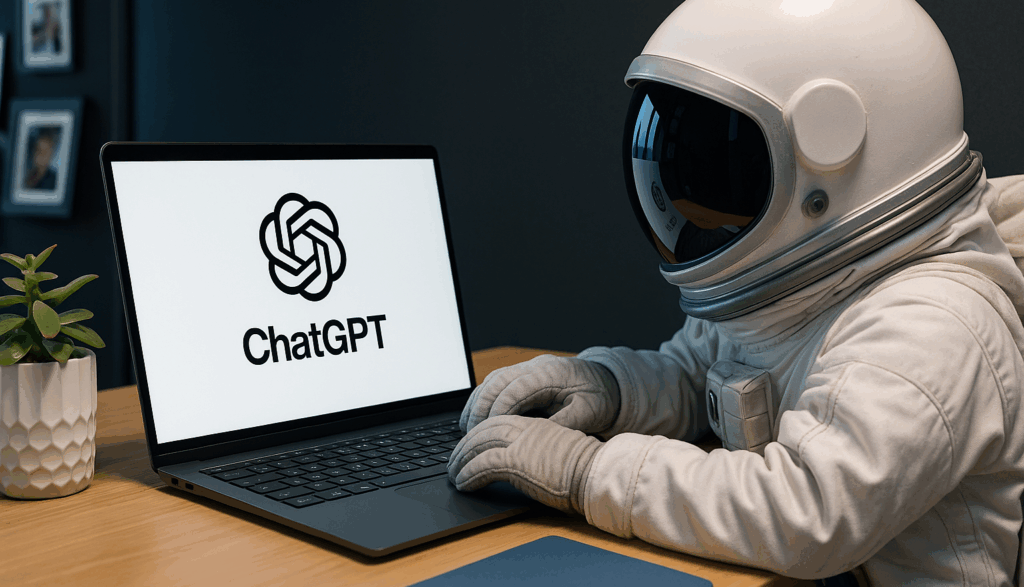The launch of ChatGPT shopping with features like Instant Checkout marks a major shift in how AI engages with e-commerce. What was once just a conversational tool is now evolving into a full retail channel that blends product discovery, personalized recommendations and efficient checkout in one place.
As OpenAI expands global access, introduces multi-item carts and partners with more merchants, ChatGPT has the potential to redefine digital shopping and emerge as one of the most powerful platforms in the retail space.
Smarter Product Discovery
Before Instant Checkout, ChatGPT already provided advanced product discovery features. For example, typing a query like “Best organic coffee beans under $30” would display a carousel of products with images, prices, reviews and product links.
This early version made browsing easier by presenting curated options without requiring users to sort through endless search results. Unlike traditional ads, these recommendations were algorithmically generated based on relevance and availability.
Products included photos, pricing and customer reviews, while non-partner items still linked externally.
Instant Checkout
The introduction of Instant Checkout in September 2025 marked a turning point for ChatGPT shopping. Instead of stopping at product suggestions, ChatGPT now enables the complete buying journey within the same conversation.
At launch, the feature integrated with U.S. Etsy sellers which gives users the ability to browse and purchase from independent merchants directly in-chat.
This first rollout sets the foundation for broader expansion, including upcoming Shopify integrations that will add millions of listings across categories.
How Checkout Works in ChatGPT Shopping
The checkout experience is built for both ease and security. When you click the “Buy” button on an eligible product, you confirm your shipping and payment details directly within the chat. Transactions are powered by Stripe, using trusted encryption and fraud protection to safeguard every purchase.
Unlike one-click systems on traditional platforms, ChatGPT requires explicit confirmation for each order which helps prevent mistakes or accidental buys while maintaining a smooth shopping flow.
Availability: Who Can Access It Now?
Instant Checkout is available to U.S.-based ChatGPT users across Free, Plus and Pro plans. Eligible products currently come from Etsy merchants with Shopify integrations on the horizon. While the rollout is still limited, OpenAI plans to expand access globally which will open the door for more merchants and a wider selection of products over time.
Turning ChatGPT Into a Revenue Stream
The shopping feature isn’t just about user convenience but it also marks a shift in OpenAI’s approach. Instead of charging buyers, OpenAI earns a commission from merchants on completed transactions.
This creates a new revenue stream alongside subscription tiers like ChatGPT Plus and Pro. By combining AI-driven product discovery with direct purchasing, OpenAI is positioning ChatGPT as both a search tool and a retail channel, capturing value from the transactions it facilitates.
Merchant Fees and Cost Structure
For Shopify merchants, Instant Checkout includes a small fee per successful transaction which will apply only after a purchase is completed. This fee doesn’t change the product’s listed price and won’t affect how items are ranked within ChatGPT.
Orders, payments and fulfillment remain fully managed by the merchant, with store names displayed to maintain transparency and brand visibility. Importantly, OpenAI emphasizes that recommendations are unsponsored and algorithm-driven.
When multiple sellers list the same product, ranking is determined by objective factors such as availability, price, seller reliability and Instant Checkout support.
How to Get Your Products Listed
Getting your products listed requires more than just having an online store but it’s about making your listings AI-ready. By aligning with supported platforms and optimizing your data, you can increase visibility and improve the chances of reaching new customers.
- Use Supported Platforms: ChatGPT Shopping integrates with major e-commerce platforms like Shopify, WooCommerce and Amazon. Ensure your store is active on one of these systems to qualify for integration.
- Optimize Product Listings: Provide clear, accurate descriptions high-quality images and up-to-date pricing since ChatGPT relies on this information to connect your products with the right customer searches.
- Connect Product Feeds or APIs: Some platforms require product data to be shared through feeds or APIs. Work with your e-commerce provider to ensure your catalog is properly formatted and fully compatible with AI-driven search.
- Enhance SEO and Structured Data: Implement product schema markup, relevant SEO keywords and metadata. These optimizations help your products appear more prominently in AI-driven shopping results.
- Encourage Positive Reviews: Strong ratings and authentic customer feedback improve your product’s visibility and increase the likelihood of being recommended by ChatGPT.
Current Limitations
As with any early rollout, ChatGPT Shopping comes with certain restrictions. At present, only single-item purchases are supported, so users cannot build multi-product carts. The feature is also limited to U.S. users while international shoppers must continue relying on external merchant links. These constraints are expected to ease as OpenAI strengthens its infrastructure and expands merchant partnerships.
Tips for Optimizing Results
Being visible results takes more than traditional SEO but it requires making your product data AI-ready. To improve visibility and ranking, here are key tips to optimize for ChatGPT shopping results.
Tip #1: Optimize Structured Metadata
Use schema.org markup or product feeds (JSON-LD/XML) to provide accurate details like price, availability, dimensions and SKUs. Validate data with testing tools to avoid errors and improve visibility.
Tip #2: Build Strong Reviews and Ratings
Encourage detailed and authentic customer reviews that highlight features and experiences. Consistent positive feedback improves credibility, trust and ranking in AI-driven results.
Tip #3: Write Clear Product Descriptions
Keep descriptions simple, structured and focused on key features. Avoid jargon or fluff so AI can easily summarize and present your products accurately.
Tip #4: Refine Pricing and Value Positioning
Set competitive, transparent prices and use product content to show why your item is worth the cost. Clear value messaging boosts both visibility and conversions.
Tip #5: Match User Intent to Build Authority
Use natural language, long-tail keywords and supporting content like FAQs to align products with how customers search. Relevance drives higher ranking and trust.
Tip #6: Prepare Product Feeds for Integration
Keep product feeds clean, structured and up to date with accurate pricing, inventory and variations. Early readiness will make future OpenAI integrations smooth.
The Future of ChatGPT Shopping
ChatGPT shopping is still in its early stages but it’s already transforming how people discover and purchase products online. With features like Instant Checkout, personalized recommendations and expanding merchant integrations, OpenAI is positioning its platform as more than a conversational assistant but an evolving full retail channel.
While current limitations such as single-item checkout and U.S. only availability remain, the roadmap points toward global expansion and multi-item support. As agentic commerce grows more competitive, this approach has the potential to stand out by combining convenience, personalization and trust in one seamless shopping experience.





